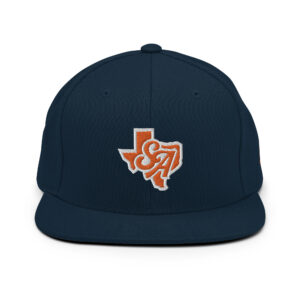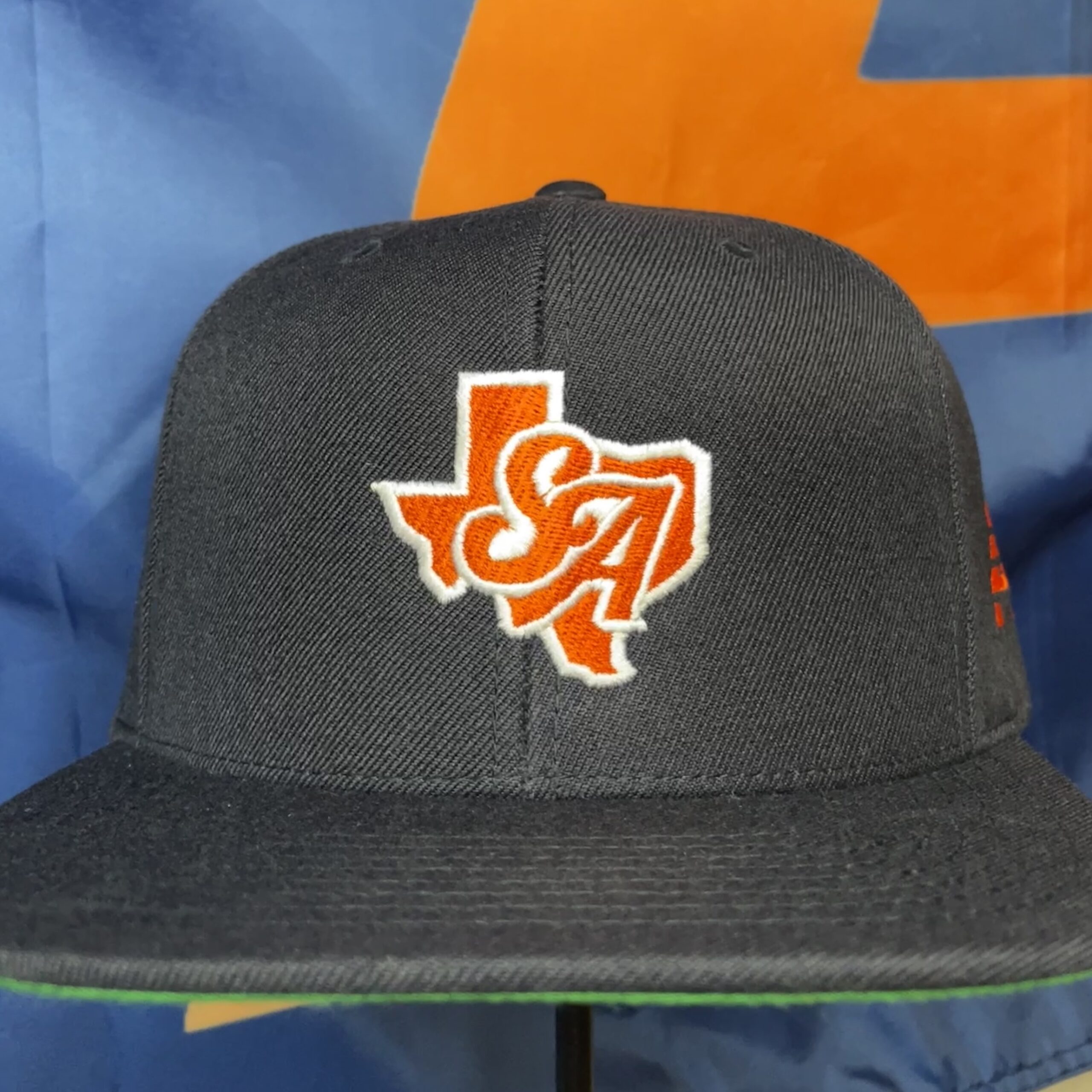Follow Alamo Audible:
Photo Credit: Burk Frey of BirdsUp.com
Note: Due to the large number of animated graphics, we recommend viewing this post on desktop.
Hello folks, I hope you’re all recovered from your celebration of UTSA’s win over Illinois to open the season last night. Given the magnitude of last night’s win, and the beginning of a new season, I’m unlocking this post right off the bat. Typically our film break downs are behind the paywall as premium content, but I want to give our new subscribers a taste of the type of coverage we provide each and every week during the season. If you like what you read below, please consider becoming a supporter on Patreon to get access to our next 11.. 12.. 13?!… film break downs.
Moving along, I think there’s debate to be had over whether or not this was UTSA’s most important win or not, but I think it’s pretty tough to debate that this was the program’s biggest and most impressive win.
Yes, road wins over Houston in 2014 and Baylor in 2017 probably had a bigger impact on the program at the time in which they occurred, but UTSA systemically dismantled a Big Ten program on the road, beating them at their own bully ball game in the second half.
Houston finished the 2014 season ranked 56th in SP+, so that will probably remain the program’s best win in terms of opponent strength, but I think Illinois will finish the season quite a bit higher than their current ranking at 81. Baylor finished their 2017 season ranked 76th (wf?!), so I think it’s safe to say Illinois’ 2021 team will surpass that ranking. You have to factor in the P5 bump when determining the program’s best win, in my opinion, thanks to the media attention and recruiting advantage it provides.
But even outside of opponent strength on paper, UTSA played arguably their most impressive game of football through 11 seasons. There was no denying the Roadrunners were a substantially more talented, and better coached team than what was standing on the other sideline. UTSA won by seven but could have easily won by 21+ had they managed to hold on to one of Art Sitkowski’s three turnover-worthy throws.

Before we start breaking down a few plays, I wanted to call out some general observations from the game.
First off, let’s talk hidden yardage. If you’re unfamiliar with the term hidden yardage, I’ll give a quick explanation. The exact definition varies depending on who you ask, but generally speaking, it’s a metric that looks to answer the question of which team gained an advantage over its opponents by winning on kickoffs and punts. If Team A had 400 total yards and Team B had 350 yards, but Team B held an 80 yard advantage in Hidden Yardage, Team B actually has a better chance of winning the game despite being outgained by 50 yards.
UTSA got freaking crushed in hidden yardage last night. A lot of that was due to Illinois having absolutely elite punters and placekickers, but UTSA did a lot of the damage to themselves.
Everett Ornstein shanked two kickoffs out of bounds (-20 yards), then Hunter Duplessis replaced him on kickoff duties and made the same mistake (-10 yards). UTSA then went back to Ornstein who, again, kicked it out of bounds. That’s 40 yards that UTSA just handed to Illinois uncontested!
The mental mistakes didn’t stop on kickoff duties though. UTSA fans have long maligned Frank Wilson’s and Jeff Traylor’s decisions to utilize Sheldon “Sticks” Jones on punt return. He’s not an electric enough runner to rack up yardage in the return game, I think anyone will admit that. But up until last night I didn’t necessarily have a problem with Sticks returning punts since he tended to take good care of the football and made good decisions about when to field a punt.
Sticks decided to field two punts within UTSA’s own ten yard line, one of the chief no-no’s for a punt returner. If you let the ball bounce and lie, chances are it will roll into the end zone, causing a touchback and ball placement on the 20 yard line. Fielding a punt inside the ten practically guarantees awful field position, and if you muff the catch then the opponent is immediately on your door step to take advantage.
If we make the fair assumption that both of those punts would have rolled into the end zone for a touch back, that’s another 30 yards of hidden yardage that UTSA just completely gifted to the Illini.
Between the kickoff and punting miscues, that’s 70 (!!!) yards that UTSA gifted Illinois, nearly enough for an entire touchdown drive! If you take UTSA’s 497-412 total yardage advantage and add the 70 yards of mental mistakes to the Illini’s total then the two teams were practically tied in total yardage. UTSA can overcome that against a team like Illinois, but are they talented enough to make these types of mistakes and still defeat Memphis and UAB? Perhaps time will tell.

Our first play comes on UTSA’s first third down of the game. UTSA knows pressure is coming, and likely isn’t yet sure of how well their offensive line will handle the blitz from Illinois’ talented defensive line.
Barry Lunney gets Frank Harris out of the pocket on a roll out to his throwing arm side, with the running back acting as a lead blocker to pick up the “green dog” blitz from Illinois. This is a concept Illinois showed repeatedly against Nebraska, and UTSA was well prepared for it. The middle linebacker is in man coverage against the running back, and when it becomes apparent that the back is staying in to block, the linebacker rushes in to apply pressure.
The passing concept here is a Flood route combination. While this concept is typically used to attack the zone, it works out well for UTSA here against man coverage. The outside receiver has a free release over the top to clear out the outside corner, while the slot receiver occupies the flat. This leaves Zakhari Franklin in a one-on-one match up to run a deep route.
Frank Harris doesn’t zip the ball out with authority on the roll out, but his ball placement is absolutely on point, giving Franklin an easily catchable ball that doesn’t leave enough air under it to allow the defender to make a play on the ball.
Zakhari makes a clean catch without using his body before he tramples into a poor trainer on the sideline. Shame on the Illinois players for not catching Franklin before someone got hurt.
I made this argument all of 2020, but this play is just another example of Barry Lunney building out his play sheet to accommodate his players’ strengths and negate their weaknesses.

Here’s Illinois’ first sack of the game, a drive-ending play to prevent UTSA from getting on the board after a couple of first downs. Illinois shows blitzes right off the bat, with three linebackers crowding the line of scrimmage.
Three things go wrong here. Let’s list them from least to most severe.
Least pressing is Sincere McCormick failing to hold his block of the middle linebacker. Sincere does a good job of stepping into the pocket to meet the blitzer, but he’s simply not strong enough to give Frank enough time to make a play. The defender bounces off Sincere, then pursues Frank from behind.
This sack could have been avoid by Frank recognizing the numbers disadvantage. With Illinois bringing seven blitzers to UTSA’s six blockers, there was no chance that UTSA could hold up this pass protection for long. The route options here didn’t give Frank a good passing check down, so he should have just taken off on foot from the jump. If he would have been able to make it through the line of scrimmage there was a lot of green grass in front of him to make a big gain. In the more likely scenario, Frank has a loss of one or no gain on the play.
Lastly, left guard Terrell Haynes gets beat pretty badly in his match up. The defensive tackle bests him with a quick swim move in, leaving Haynes off balance and off his spot. Haynes is able to catch up with the defender, but the pocket has already collapsed at this point, leaving Frank helpless to step up into the pocket.

Inside linebacker Jamal Ligon forces a key forced fumble on third down to end this Illinois drive, but I want to highlight sophomore nose tackle Brandon Brown on this play. The sophomore is seeing his first game action at UTSA after transferring from Tulane, and he destroys Illinois’ super-senior center at the point of attack. Brown gets great leverage under the center, driving him a yard or two back. This push at the line of scrimmage causes the running back to bounce outside, giving Ligon time to come from behind the play through an unblocked gap which Ligon happened to be run blitzing through.
A good play call and excellent execution from Ligon, but this play doesn’t happen without the disruption from Brown — an impact which won’t show up in the box score.

Frank Harris put UTSA on the board first with this read option keeper with an RPO attached. The Roadrunners would never relinquish the lead. UTSA got excellent blocks here from Jalyn Galmore and Terrell Haynes. These two pushed the defense back by about three yards, gobbling up the inside linebacker. With the outside linebacker selling out to stop Sincere, Frank practically walks into the endzone.
Frank did have a passing option attached to this play, which we see him quickly check as he makes his way out of the pocket. Oscar Cardenas is lined out wide, blocking the defensive back on the line of scrimmage. The safety over top stays in the area, watching for the bubble screen to Cephus as he’s open for a quick gain. The safety hanging out over head leaves the third level open for Frank, and he lets his speed do the rest on his way to the end zone. Bonus points to Leroy Watson with the pancake at the end of this clip. Check the banner image on this post for a better angle of the block.

In a podcast last week I said that the hope for A&M transfer Clifford Chattman is that he has the type of week one impact that Charles Wiley did against Texas State last year. Chattman did that and more, as his involvement in the defense increased exponentially throughout the span of the night. UTSA just couldn’t justify taking him off the field.
UTSA goes to a nickel defense on this third and long, with Chattman replacing a linebacker in the defensive alignment. Chattman gets put into man coverage against one of Illinois’ slot receivers, a match up where Chattman enjoys a substantial length advantage.
Illinois’ receiver foolishly initiates contact with Chattman in an attempt to create separation, but Chattman takes the opportunity to punk the receiver by delivering a strong, legal blow. The receiver is staggered off of his route and loses his footing, leading to an interception and a near turnover. Illinois’ receiver tries to sell the contact to draw a flag, but the ref correctly keeps the yellow flag in his pocket since the receiver initiated the contact.

A lot of good things stand out in Brenden Brady’s first touchdown run of the night. UTSA runs a GT counter, with the backside guard and tackle pulling into the play side. This has been one of UTSA’s best plays throughout the Traylor era.
Every man does his job on this play. The non-pulling blockers do an excellent job of creating a wall on the backside of the play. Jalyn Galmore has the defensive tackle staring at the sideline by the time the pulls hit the gap, which is always the goal when you’re running a zone blocking concept.
Brandon Rolfe gets out in space and picks up the outside linebacker, knocking him off of his feet and unable to contest the run. Spencer Burford follows behind him, delivering a huge hit to the inside linebacker. Burford actually gets knocked back to the ground on this hit, but the damage is done by this time.
Brady shows great footwork on this play as he dances around all of the moving parts in the gap to squeeze through the hole and into the end zone… But it’s Alamodome Audible favorite Oscar Cardenas who steals the show here.
Cardenas begins the play with a double team on the defensive tackle with Jalyn Galmore. Cardenas is such a cerebral blocker; his feel and timing on this block is just perfect. Cardenas steps into the defensive tackle’s outside shoulder with a lateral step, giving Galmore a jump-start on owning his block. While Cardenas is engaged with the defensive tackle, his eyes never leave the secondary. As Cardenas feels (not sees) the defensive tackle begin to twist away from the running gap, Cardenas jumps out to the third level, knowing Burford and Rolfe have the second level covered. Cardenas doesn’t knock the defensive back to the ground, but he doesn’t need to. Just getting between the safety and Brady is all Oscar needs to do to turn this successful five yard gain into a seven yard touchdown.

Assigning blame to blown coverage touchdowns off of a TV broadcast is so difficult. We don’t know the play call, and we can’t see the All-22 film to see how each of the defensive backs is moving/looking throughout the play, but based off what we can see on TV, it looks like Antonio Parks had the missed assignment to give the Illini their first touchdown.
UTSA appears to be in a cover two zone coverage, with a corner taking one of the deep zones in replace of the safety Parks. I’ve highlighted the moment in the play where Parks should have “passed” his assignment back to the two deep zones, and broke off of the receiver to go defend the receiver who came in motion and ran the wheel route along the boundary.
Besides the missed assignment, Parks makes two technical mistakes here that make his job more difficult. First off, he flips his hips to follow the first receiver, making it hard for him to change direction towards the sideline as the ball is released. Secondly, Parks never seems to notice the receiver coming in motion to his side of the field as his eyes are transfixed on the quarterback.

Practically the same play on the second touchdown, just ran out of a different formation and personnel package. This touchdown is much more the fault of a poorly-timed play call, although I think either Jamal Ligon or Clarence Hicks could have picked up the tight end who ran the wheel route here. Hicks would have had to flip to the other side of the line, exposing the man coverage.
Either way, UTSA blitzes the outside linebacker who was in position to cover the tight end, who just so happened to have a route assignment away from the rest of the linebackers remaining in coverage.

Two players to compliment here. Dantzler uses a swim move around the tackle and a bull rush through the running back to force an early release from Sitkowsi. Dantzler was inches away from causing a fumble, as he had his hand up to swipe Sitkowski’s arm as he released.
Rashad Wisdom make a beautiful play on the ball here, releasing from his assignment to go up and swat the ball down once it was in the air. Terrific ball skills from UTSA’s star safety.

Welcome to UTSA, Dru Prox. Quite a bit more fun than losing to FCS teams at Kansas, huh?
Dadrian Taylor crashes in on a great blitz but gets tackled by the offensive lineman, one of countless awful holds that Illinois got away with last night. Asyrus Simon wins his battle with Illinois’ guard, as the redshirt freshman threw a senior to the ground like a toy. Prox then comes downhill as he’s taught to and obliterates the running back for a key tackle for loss on third and two. DQ Henry also closes in with great backside pursuit to make sure this play was over before it started.

Something I truly believe with all of my heart is that one of the top things that separates a good offense from a great offense is how well the receivers block. Credit to Franklin for the YAC here, but look at how long Cephus (cleanly) holds his block. JT Clark also pulverizes a defensive back, leaving Franklin open to get into the end zone. Remind me who the G5 team is here again?
Game Balls
Jalyn Galmore – This preseason Jeff Traylor said that they decided to bring Jalyn Galmore back for a super senior season as they thought he was better than any offensive tackle UTSA could land through the transfer portal. It looks like Jeff was spot on here, as Galmore executed the offense beautifully when his number was called.
Clifford Chattman – I had high expectations for Chattman, and he completely delivered on them in game one. Chattman was physical and quick in coverage. Illinois didn’t have a receiver on their roster who could out run or out jump him.
Tariq Woolen – Some players “eat the cheese” when they start receiving attention from NFL scouts. Not the case for Woolen. He played his best game as a Roadrunner, with big contributions in both the pass and run game.
Brenden Brady – When a good player is stuck behind a star in the depth chart in the transfer portal era it’s really easy for them to transfer out of a program to somewhere they’ll be the starter. Brady has remained committed to this program, and was rewarded for his loyalty with two touchdowns on national television.
Frank Harris – Frank wasn’t perfect, but he orchestrated this offense extremely well. Outside of the fumble on a botched option pull, Harris protected the football and had good placement on his throws. Frank showed that he has the arm talent to prevent defenses from being one-dimensional, even if he does continue to struggle to connect on the home run opportunities.
Thank for sticking with me through the end of this break down, which I hope you enjoyed. As a reminder, we do one of these each Sunday during the season. Become a subscriber on Patreon to make sure you never miss another film break down, as you simply can’t get this content anywhere else on the UTSA-net.
Want to see more or less content like this? Let us know with an upvote or downvote.
Share this post:









Related Posts
What if UTSA stays in Conference USA or the Southland?
🔐UTSA 2013 Recruiting Class Recap
UTSA Baseball Players Show Their Connection and Support to Coach Hallmark in a Meaningful Way